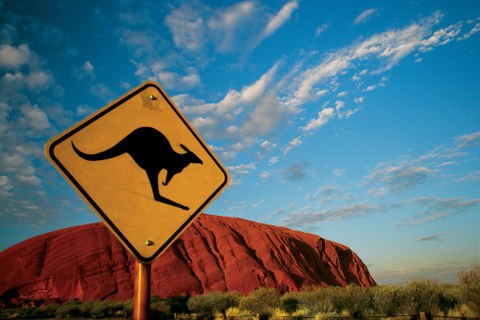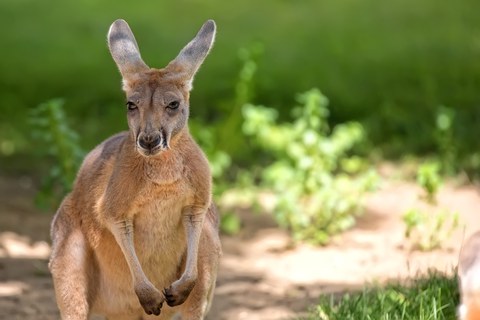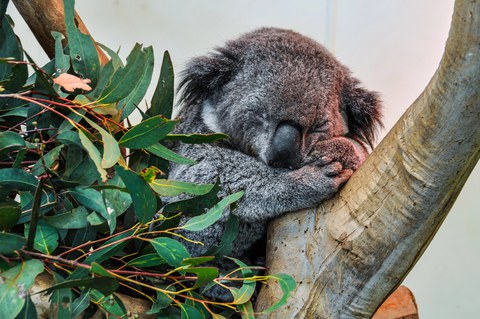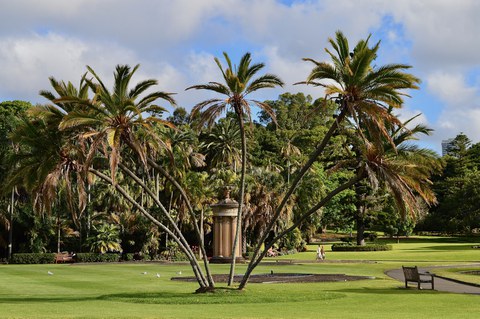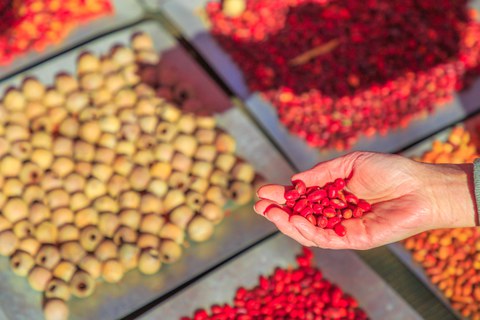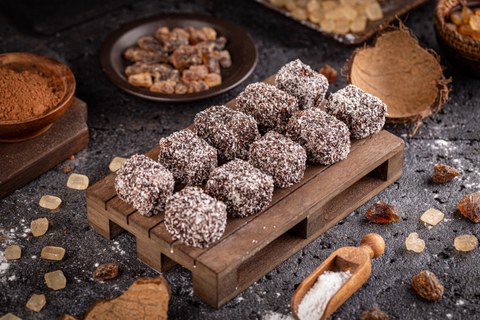Partner Country of the Month February 2023: Australia
New year, new opportunities! Thanks to TU Dresden's new partner university, you can now discover Australia during a semester abroad. As the only country encompassing an entire continent, Australia is known for its unique nature. It's home to marsupials like koalas and kangaroos, the peculiar platypus, and the Great Barrier Reef, the world's largest coral reef. Vast and arid red-earthed savannahs and deserts make up the outback, which covers about two-thirds of the country. The southeastern coast with its lively cities offers a strong contrast. Let's go down under!
With the "Partner Country of the Month" campaign, we want to shine a spotlight on the wide diversity of countries, regions and partner universities of TU Dresden that our students can explore during a semester abroad.
Table of contents
General facts and figures about Australia
Capital: Canberra
Population: 25.8 million
Official language: officially none, de facto English
National holiday: Australia Day on 26th January (arrival of the first settler fleet)
Currency: Australian dollar (AUD / $)
You can find further facts and figures on wikipedia, on Australia’s official website, or e.g. on australia-info.net.
Language matters
- G’day – Good day
- Aussie – Australian
- Straya – Australia
- Arvo – afternoon
- Defo – definitely
- Devo – devastated
- Ambo – ambulance
- Chrissie – Christmas
A special feature of Australian English it its love for abbreviations. Fittingly, this is where the selfie was invented, or at least where it was named. From an Australian point of view, the abbreviations don’t necessarily sound cute, but above all laid back and friendly. This goes well with Australian culture, where friendliness and informality are very important and social hierarchies are flat.
Too much politeness can even lead to misunderstandings with Australians. For example, while adding "Sir" or "Madam" is a respectful recognition of status in the US, the distance created by this phrase will be perceived as awkward or insulting in Australia. So just stay casual. Speaking of misunderstandings: When Australians talk about thongs, they mean flip-flops.
Please check our partner university’s language proficiency requirements before applying. You can join a course at TUDIAS to brush up your English. They even offer a special preparation course for a period abroad.
Did you know that ....?
- kangaroos get into boxing matches? The largest marsupials are formidable fighters with a talent for kickboxing. Male kangaroos start sparring at a young age and can get jacked as a gym bro. Red kangaroo males can weigh up to 90 kilograms, reach 2 metres in height, and are quite capable of hospitalizing humans that come bothering. When fighting, kangaroos use their tail for stabilization. It holds their entire weight while they deliver powerful kicks with both legs.
-
eucalyptus leaves can be musical instruments? The leaf is held against the lips (the exact technique can vary) and made to vibrate with puffs of air. If you try it yourself, you probably won't get a sound out of it, but skilled gum leaf musicians can produce loud and precise tones, imitate bird calls, and play entire melodies on a single leaf. Gum leaf is a traditional Aboriginal instrument (of Australia’s native people).
-
England used Australia as a penal colony? After the English first set foot in Australia in 1770, the First Fleet of convicts followed in 1788. England was looking for a solution for its overcrowded prisons. From today’s perspective, punishing minor crimes less severely seems like the obvious fix, but the English government decided to ship surplus convicts to Australia. The crime was usually theft and the minimum sentence 7 years transportation. Returning was hardly possible due to the lengthy and expensive sea voyage. Many carved convict love tokens for the loved ones they left behind.
- many important inventions come from Australia? The list includes pacemakers, modern WiFi technology, HPV vaccines, dual flush toilets for saving water, medical ultrasound and cochlear implants for deaf people.
-
some Australian plants and animals have pyromaniacal survival strategies? Like the eucalyptus tree, which promotes fires through the highly flammable oils it produces. Afterwards, it regenerates faster than other species, thanks to its fire-resistant parts. Firehawks sometimes pick up burning brands and drop them elsewhere to scare up prey by fire. The bush is adapted to fires and even needs them - but only if they're small, like the cultural burns Aboriginal groups practised for thousands of years. The extreme bushfires of recent summers, fueled by climate change, were devastating.
-
Australia has quite a few cattle ranches in the size of small countries? The largest, Anna Creek Station, was measured at 23,667 km² in 2016 - that's somewhat more than Slovenia. It would take countless cowboys on horses to muster cattle in that large an area. Therefore, they mostly work by helicopter nowadays.
-
the stories passed down by Aboriginal groups are the oldest oral histories in the world and reflect geographical changes of the Ice Age? The landscape and events that manifest in it are a central theme of Dreamtime narratives. Stories of local sea level changes exist in many Aboriginal traditions, and they match up with the geographic knowledge of coastal changes in Australia following the last Ice Age. Hence, these stories have been told accurately for up to 13,000 years.
-
the architecture of the iconic Sydney Opera House was inspired by a peeled orange? Calculating the various differently sized shells that make up the roof presented a challenge for the design’s implementation. Until, while looking at an orange, it occurred to architect Jørn Utzon that all pieces could be cut from a single sphere.
Cooperation with TU Dresden
You can find an overview of all cooperations of TU Dresden that you can use for your exchange in our database. It is also often worth your time to ask professors in your own faculty who might have direct contacts to your partner university of choice.
Our Australian partner universities
- University of Technology Sydney
- multidisciplinary cooperation via TUDworldwide
- Like TU Dresden, our partner university is named after technology, but offers the whole spectrum of different degree courses. Besides, there are more than 200 clubs and societies, ranging in topic from sports, nature trips or social issues to cat café visits.
- Sydney is Australia's largest and most well-known city and often gets mistaken for its capital. Many international influences mix here, as almost half of the 4.7 million Sydneysiders were born outside Australia. Sydney is located on the southeastern coast. Its distinct seasons run opposite to those of Europe - so January and February are perfect for heading to the beach.
- Flinders University in Adelaide
- Faculty cooperation for Medicine
- You can fund your exchange at Flinders University with a scholarship from ISAP (International Study and Training Partnerships). To find out more, see the information on TUD’s faculty cooperations. Conveniently for medical students, Flinders Medical Centre, a large teaching hospital, is located right on the campus of Flinders University.
-
Adelaide is South Australia's largest city, located directly on the coast and among hills and vineyards. Why not spend the afternoon on the beach after attending class, or hop over to Kangaroo Island on the weekend? With a great variety of sporting events and festivals (including one of the world's largest arts festivals), Adelaide also has a lot of cultural attractions.
Don't miss...
The Blue Mountains are part of the ring of national parks surrounding Sydney and there’s even a direct train connection, the Blue Mountains Line. The deep forested valleys between sandstone plateaus offer great hiking opportunities and give an impression of Australia’s vastness. There are many waterfalls and gorges to discover, and if you ever miss Sächsische Schweiz, a trip to the Three Sisters is sure to help.
At Featherdale Wildlife Park on the outskirts of Sydney, you can get up close and personal with Australian animals. About 260 native species of mammals, reptiles and birds live here in naturalistic enclosures. There are kangaroos, wallabies (their little cousins) and koalas, but also lesser-known animals like Tasmanian devils, quokkas, or bilbies. You can book special encounters (max. 2 people) with some of them. For example, you would get to observe koalas up close, help feed them and even pet them.
Around Sydney Cove is where the city's cultural heart is beating. Here are some worthwhile places with free admission: The Australian Museum is the oldest natural history museum in the world, with exciting exhibitions on e.g., Australia's prehistoric animals, mineralogy, or indigenous cultures and experiences. At the interactive exhibits of Powerhouse Museum, you can learn about inventions and technology of all kinds, from an operational steam engine to spaceship models. And in the Royal Botanic Gardens you can admire plants from all over the world growing among ponds and sculptures – with a harbour panorama and the Sydney Opera House as a backdrop.
At Lillipad Café in Sydney, you can discover flavours that are impossible to find outside Australia. Even within the country, they are rarely used. At Lillipad, local ingredients from Aboriginal cuisine are incorporated into the dishes, such as bush tomatoes, finger limes and wattleseed. The small café’s classic dish is the gangurru burger... well, what does the word gangurru remind you of? Almost all dishes can also be prepared vegan, gluten-free or lactose-free.
Let's get cooking...
Modern Australian Cuisine or Mod Oz is an exciting mix that reflects the country's immigration history. The influence of English cuisine is traditionally strong, with fish and chips, meat pies and pub culture as some of its contributions. Chinese food is very popular, and almost every city has its own Chinatown full of excellent eateries. In addition, there are influences from Italy, the Middle East, Thailand, India, Japan, ... you name it. Try the food courts in shopping malls to have a taste of everything.
It's hard to imagine Australia's food culture without barbies. Beg your pardon? This is where the Australian love of abbreviations hits home - barbecues are so popular that places like beaches or parks often have public barbecue sites that you can use for free or for a small fee. Vegemite is another typically Australian thing. It’s a spread with a bouillon-like taste that people usually eat on toast for breakfast – sorry, for brekkie.
Lamingtons
These chocolate and coconut cake cubes are an Aussie classic. Legend has it that they were improvised by the cook of Lord Lamington, who was governor of the state of Queensland around 1900. They were either meant as a snack for surprise guests, or the result of salvaging a failed cake – maybe both at once. What we know for a fact is that they taste good and are best accompanied by a cup of tea or coffee. You can add a filling of jam or whipped cream to your lamingtons if you like. You can find a recipe at recipetineats.com.
Contact
Have you had a great time in Australia? Do you have tips for places and experiences that are not to be missed? We would be happy to share your experiences here, on social media or, if you want, in information events for other TUD students. Get in touch with us:
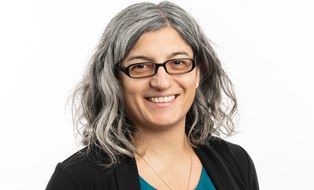 © Sven Ellger/TUD
© Sven Ellger/TUD
Advice on studying abroad
NameMs Federica Serra
Infocenter/ Study abroad; TUDworldwide: America
Send encrypted email via the SecureMail portal (for TUD external users only).
Visiting address:
Fritz Foerster Bau, Office 161 Mommsenstraße 6
01069 Dresden
Postal address:
TUD Dresden University of Technology International Office
01062 Dresden
Office hours:
- Tuesday:
- 09:30 - 11:30
- 12:30 - 14:30
- Thursday:
- 09:30 - 11:30
Please register at the SCS (FOE, floor 0).
Looking for first-hand information?
Would you like to know more about Australia? Ask our alumni ambassadors - TUD alumni who are active in many countries around the world and can give you information and advice for your stay abroad.
Getting in touch is very easy: On this interactive world map, markers indicate the cities where our alumni ambassadors live. There is a short profile with contact information for each ambassador.
Partner Countries Archive
Have you missed a partner country? No worries! Here you can read up on all articles.
|
Europe (Erasmus+) |
|
|
Africa |
|
|
America |
|
|
Asia |
|
|
Australia and Oceania |
|

